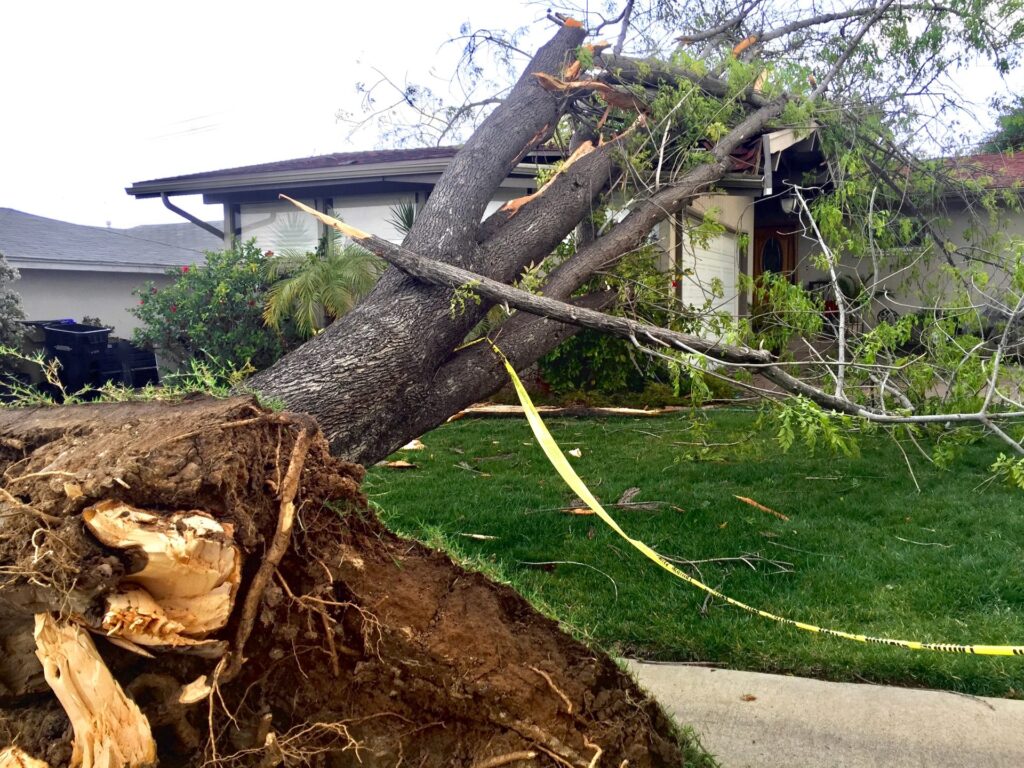Win Against Weather: Hail Damage Lawyer Tips for Claim Success!
Nobody wants to deal with the results of a severe hailstorm, it is overwhelming for both homeowners and commercial property owners.
The damage to roofs, windows, and exteriors can not only diminish the aesthetic and functional value of a property but also lead to significant financial loss. Understanding the importance of proper documentation and representation is necessary in ensuring that insurance companies provide you the compensation warranted by your policy.
In the state of Texas, property owners often face the challenge of navigating complex insurance claim processes following storm damage. We will explore the realities that come with these challenges and how strategic measures can maximize your claims’ success:
- Initial Steps: How to properly document damage immediately after a storm.
- Maintaining a Comprehensive Property Damage List
- Handling Insurance Claims: Key advice from experienced hail damage lawyers to avoid common issues.
Understanding these points, you will be better equipped to handle hail damage claims effectively, potentially saving thousands of dollars and countless hours of stress.
Initial Documentation Steps by a Hail Damage Lawyer:
Hail storms, wind storms and hurricanes can bring about severe property damages, our purpose is to help you recover your full insurance benefits. By following these simple steps you can start the process of effectively documenting damage for your insurance claim:
- Take Immediate Action: Inspect your property for roof damage (missing shingles, water leaks, broken gutters, etc.) or structural damage. Call in roofers or contractors if you cannot safely inspect your property.
- Document the Damages: As soon as the storm passes, write down the date and time of the storm and the times your property was inspected by a contractor or the insurance company’s adjuster.
- Capture Detailed Photos: Photograph all storm and hail impacts. If you know how to, we recommend using timestamps on your photos to validate the occurrence and extent of the damage.
- Maintain a Comprehensive Damage List: Alongside photographic evidence, write a detailed description of the damage. This helps to speed up the claim filing process. Also, describe the nature of the damage to each part of the property (e.g., roof tiles missing, water damage in the basement).
- Immediate Reporting: Report the damage to your insurance company as soon as possible. Provide all the documented evidence you have gathered.
- Receipts and Records: Keep receipts for all purchases related to temporary repairs as your insurance may cover these costs.
- Professional Estimates are Key: Secure estimates from certified professionals to substantiate your claim amount. These will come handy during claim negotiations.
- Regular Updates: Stay proactive in your communication with the insurance adjuster to keep the claim moving and request regular updates on the status of your claim
Maintaining a Comprehensive Property Damage List
When a hailstorm hits, the extent of damage can vary widely, affecting various parts of your property. This documentation will be invaluable when submitting your insurance claim. Below are ten key places or objects to check for damage, along with tips on how to effectively record and report this information to your insurance company.
- Roof
- What to Check: Look for missing, cracked, or dented shingles. Pay special attention to any exposed underlayment or roof decking.
- How to Record: Use a drone or camera to take clear aerial photos. Note any areas where the damage appears concentrated.
- Gutters and Downspouts
- What to Check: Check for dents, holes, or detachment from the building.
- How to Record: Photograph the gutters from a ladder or from the ground, capturing any visible distortions or disruptions in alignment.
- Windows
- What to Check: Inspect for cracked glass, damaged frames, or broken seals.
- How to Record: Take photos of each window affected, clearly showing the extent of physical damage.
- Exterior Walls
- What to Check: Look for dents on siding, chipped paint, or punctured exteriors, especially for materials like aluminum or vinyl siding.
- How to Record: Capture wide shots of each wall and close-ups of specific damages.
- Air Conditioning Units
- What to Check: Inspect for damage to external units including dents to the fan, casing, or impaired functionality.
- How to Record: Take pictures from multiple angles and note any abnormal sounds when the unit is running.
- Decking and Porches
- What to Check: Examine for splintered wood, cracks, or chipped finishes.
- How to Record: Document the damage with overhead and side photos; include measurements of affected areas.
- Fences
- What to Check: Assess for broken sections, detached panels, or damage to the finish.
- How to Record: Photograph damaged sections with a tape measure visible to indicate the extent of the damage.
- Landscaping
- What to Check: Look for damaged trees, shredded plants, or ruined garden structures.
- How to Record: Take wide-area photos, and also focus on specific damaged elements like broken branches or trampled flower beds.
- Outdoor Furniture
- What to Check: Evaluate furniture for broken pieces, fabric tears, or glass damage.
- How to Record: Take photos from several angles, ensuring that damage is clearly visible.
Tips for Recording Damage
- Record Serial Numbers: For appliances or electronics, record any visible serial numbers which can assist in claim verification.
- Keep a Log: Maintain a log of all the damages, including a description, the date of the inspection, and any immediate actions taken.
By methodically checking these areas and accurately recording the damage, you can provide your insurance company with a detailed and clear claim submission. This can help speed up the claims process and increase the likelihood of receiving appropriate compensation for your losses.
Your Insurance Policy: Guidance from a Hail Damage Lawyer
We talk about this all the time. But, the basics include:
- Know What Your Policy Covers: Understanding your policy details is a priority. Know what is covered and what your responsibilities as a homeowner are.
- Deductibles and Limits: Be aware of your deductibles and any coverage limits. This affects the payout from your insurance.
- The Importance of Policy Endorsements: Check for any endorsements that could alter your coverage. Knowing these can change your outcome in claim disputes.
- Red Flags from Your Insurance Company: Understand the signs of unfair claim practices like unexplained delays or denials. Recognizing these signs early can save you time and frustration.
Stormlex Tip: See our post about bad-faith insurance practices to learn what to do if you recognize unfair treatment from your carrier, here.
Preventive Measures and Future Preparedness
To prevent future claims and reduce the risk of damage after a storm, you should follow preventive measures as well. For instance, our property damage lawyers recommend 3 simple steps that will significantly decrease your chances of facing denied insurance claims.
- Maintenance and Inspections: Regular property inspections and maintenance can mitigate future hail damage.
- Upgrade Your Coverage: Consider upgrading your insurance coverage, only when necessary, based on past storm experiences and future risk assessments.
- Build a Relationship with Your Insurer: A good relationship with your insurance company can be beneficial. It might influence the ease of future claims processing.
Legal Representation in Hail Damage Claims
If your claim gets denied even presenting the proper documentation, or gets paid unfairly, it’s a good moment to consider hiring a property damage lawyer. A hail damage lawyer ensures you’re not short-changed by your insurance.
We are here to advocate for your rightful compensation. We have skilled hail damage lawyers who can navigate the complexities of insurance policies and ensure that your claim is fairly represented. Select a lawyer with a strong record in handling damage claims. Experience matters in insurance litigation!
By thoroughly understanding each of these steps and considering the strategic advice offered by hail damage lawyers, you can enhance your preparedness for, and response to, hail and other storm damages. This knowledge prepares you to handle future incidents more smoothly, ensuring that your property is restored and your financial interests are protected.
Stormlex Law Group is sharing weekly videos that break down insurance policy terms and why they matter, tips for navigating the claims process more effectively, and all things Texas insurance law related.
If you reside in San Antonio, Dallas, Austin or another Texas city, be sure to give us a follow so that you know your property rights as a policyholder in Texas!
Photo by Marissa Grootes on Unsplash



















